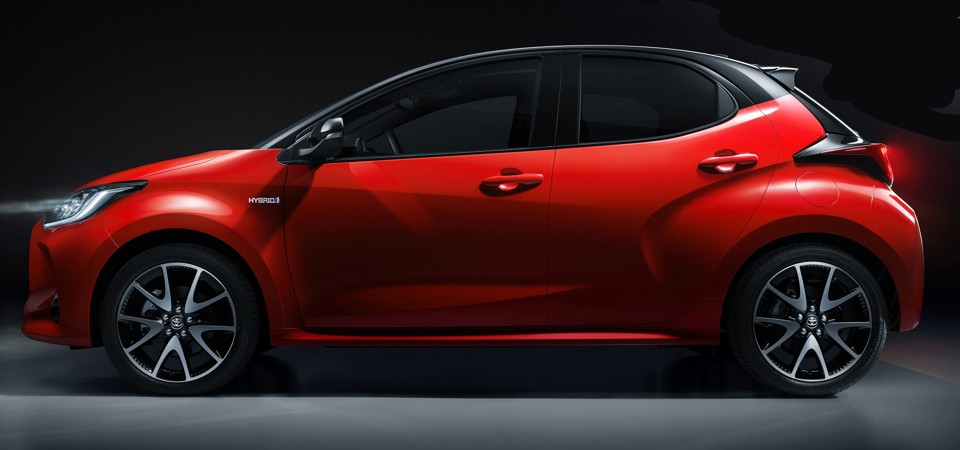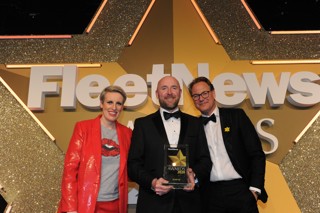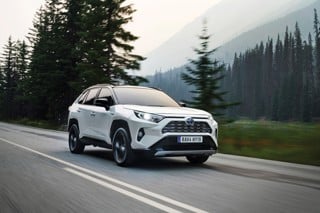For the Japanese, patience is a defining virtue: for Toyota, it could sum up its entire environmental policy.
The carmaker launched its first hybrid vehicle, the Prius, to an unsuspecting UK public 20 years ago. It became something of a cliché that tree-huggers delighted in the quirky car’s green credentials, but they were an exclusive bunch. In its first four years, Prius sales accumulated fewer than 1,500 models.
It took another four years before Prius achieved a foothold in the market, while registrations peaked at just more than 10,500 in 2010. Since then, newer Toyota hybrids have carried forward the baton, notably the Yaris Hybrid which finds almost 16,000 new owners each year.
From modest beginnings, Toyota has now sold 374,570 hybrid and plug-in hybrid cars in the UK, plus a further 130,560 Lexus hybrids. Patience indeed.
“Getting the message out there in a market of diesel was difficult, but we remained true,” says Stuart Ferma, Toyota & Lexus general manager, fleet.
In those early days, fleets swayed towards Toyota’s hybrid models primarily because either their drivers wanted to reduce their impact on the environment or the company itself felt it had to be seen to be ‘green’.
While the environment agenda is still a major attraction, other, more pragmatic, reasons are coming to the fore, according to Ferma.
Chief among them is the competitive cost of ownership, with low National Insurance, low service, maintenance and repair costs and strong residual values, while drivers benefit from low benefit-in-kind taxation and low fuel costs.
Low fuel costs? That’s been a hotly contested claim among leasing company and pricing guide judges during numerous years of Fleet News Awards judging. However, their hard-line stance has softened in recent years, as illustrated by Toyota’s three-peat as Green Manufacturer of the Year and the Rav4 petrol hybrid’s victory in the best mid-size SUV category.
Ferma has further evidence to back his claims of frugal performance. Across more than 100,000 test drives totalling 1.5 million miles carried out in all types of weather and driving conditions, Toyota’s hybrid models have spent 54% of the journey in electric mode.
OK, so each test drive is around just 13 miles, but consider the average car journey in the UK is less than 10 miles per trip and it suggests more than half of most people’s journeys could be in electric mode.
Starting to expand
Such stats also strengthen the case for plug-in hybrid and full electric. This is an area where Toyota has lagged behind rivals who are rushing models to market, although it is now starting to expand its own alternative fuels offering.
The speed of development is a deliberate strategic decision, according to Ferma, based on having the right models in the market at the right time.
“Self-charging hybrid (Toyota’s favoured terminology) is our main offering and that’s where the demand is. It’s efficient and there’s no range anxiety,” he says. “We have 20 years’ experience on hybrid technology and there’s still big improvements to be made.”
Ferma points towards the new Yaris Hybrid, which can travel up to 80mph in electric mode, offers 22% better efficiency than the outgoing model, yet has greater power as well.
Toyota entered 2020 in bullish mood with a healthy order bank thanks to its localisation strategy introduced three years ago.
Leasing companies that have signed up to localisation give their orders to Toyota which passes them on to the dealer nearest to the driver. This ensures they get a better handover experience and an immediate relationship with the business that will be looking after their vehicle during the contract.
It has, says Toyota, resulted in an increase in orders while it can show clear evidence of an improvement in customer satisfaction. It also links into the environmental policy by reducing car movements and, therefore, reducing emissions.
So far, six leasing companies, including several in the FN50 top 10, have signed up; the plan now is to get more providers on board.
No furloughs
Like every manufacturer, Toyota was knocked off course by Covid-19, which delayed its localisation expansion and its fleet growth aspirations, although it decided not to furlough any of its team.
“We wanted to be there for our customers when they needed us,” Ferma explains.
“It also meant we did see orders coming in from businesses that were still open, including some new orders.”
While it remains far too early to begin forecasting long-term changes to the market, Ferma says interest in hybrid has increased during the course of the year.
“As people come out of petrol and diesel, they are coming into hybrid,” he says. “We have 22 models in our range, so we are gaining share in fleet. Our leasing volume is up 12% in a market down 28%.”
We are starting to see a lot more interest in hydrogen in some sectors, but it depends on the infrastructure. We are seeing cities investing in hydrogen buses and that will have a positive knock-on effect on the market – Stuart Ferma
The powertrain strategy is now focusing on a mix of options. Toyota’s plug-in hybrid range expands with next year’s Rav4, while the Mirai hydrogen fuel cell will also hit showrooms in 2021. Also on the launchpad are the Lexus UX 300e pure electric car (available to order now), Proace electric van (both due in 2021), Proace City electric compact van (2022) and, not ignoring the self-charging option, the seven-seat Highlander hybrid SUV.
Yet, despite the clear environmental agenda, diesel is not off the table; it still powers the Hilux pick-up.
“It’s about having the right mix for the market and our customers,” says Ferma. “There isn’t a winner-takes-all technology.
“However, there will be higher demand for electric and hydrogen going forward. This will be down to customer demand and usage, infrastructure and legislation.”
Self-charging hybrid
Clarity of message has been a Toyota priority ever since the early days. More recently, it has coined the phrase ‘self-charging hybrid’ to describe its hybrid models – not without some criticism from industry pundits – while it has now started calling the Mirai hydrogen fuel cell an electric car powered by hydrogen.
“We try to explain what the vehicle does in the description, for example, zero emission,” Ferma says. “It makes it clearer what it does. Hydrogen is a modular hybrid system.”
He adds: “We are starting to see a lot more interest in hydrogen in some sectors, but it depends on the infrastructure. We are seeing cities investing in hydrogen buses and that will have a positive knock-on effect on the market.”
Toyota has worked closely with the leasing companies for many years to ensure their residual analysis and maintenance forecasts on hybrid match its own expectations.
With reduced tyre, brake and clutch wear, hybrids should have a pricing advantage that is, says Ferma, not yet fully recognised by the leasing sector.
However, they do enjoy a competitive position for residual values (often 10 percentage points higher than ICE rivals over three years), helped by Toyota’s used car programme. Some of its volume comes from the strategic deals with rental companies.
“We have a healthy mix of business and that includes rental. Done in the right way, it’s an important part of getting customers close to our product,” Ferma says.
“We also look at the second use of the vehicle and how we can build demand and that has helped us to increase our residual values.”






















Login to comment
Comments
No comments have been made yet.